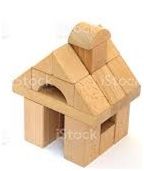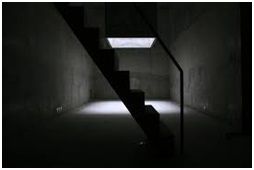A Coaching Model By Willis Phua, Business Coach, SINGAPORE
House Coaching Model Builds on the Foundation of Feeling Safe, Feeling Trusted
 When you imagine a house, what comes to your mind?
When you imagine a house, what comes to your mind?
A roof, a shelter that protects you. Windows that allows light in and most likely, you would have been picturing a door on the house as well.
When you think about a house, what kind of emotions come to your mind? For many, it will be one of comfort, warmth, and a place where one feels safe.
This Coaching Model attempts to use the building blocks of the house; A window, a door, a roof, the foundation, etc. to facilitate the coaching experience. In addition, the entire House coaching model builds on the foundation of feeling safe, feeling trusted.
House
Steps:
 Just like what a house epitomizes to many people, the coach needs to bring the client to a safe and trusted state. This is the foundation of the house, without which will simply lead to a crumbling of the relationship and trust between the Coach and Client.
Just like what a house epitomizes to many people, the coach needs to bring the client to a safe and trusted state. This is the foundation of the house, without which will simply lead to a crumbling of the relationship and trust between the Coach and Client.- Just as one often does when entering a house, you figure out where the rooms, the kitchen, and the baths are. You look around and if you look hard enough, you get to see the uniqueness of every house. Whether that is a mezzanine, a secret cellar, or a basement.
 Similarly, the Coach should be taking time to explore the topic that the client brings into the session. This means to understand the following:
Similarly, the Coach should be taking time to explore the topic that the client brings into the session. This means to understand the following:
- What is the topic exactly?
- What is the client’s session objective(s)?
- What does it look like when the client has achieved the session objective?
- What’s the benefit for the client if the objective is achieved?
- Everyone has his/her view of issues and their problems. As a Coach, it will be worthwhile to understand the perception is the client is holding regarding the session topic. This is akin to asking the Client to describe what the house looks like in his/her mind. For some, a house is a Georgian mansion whilst for others, it may be a cottage beside a winding stream.
 Often, when a client brings a topic to a session, he/she feels trapped. This feels like being in a house with no windows, a cell with bars adorning the only tiny window.
Often, when a client brings a topic to a session, he/she feels trapped. This feels like being in a house with no windows, a cell with bars adorning the only tiny window.
As a Coach, we want to figure out where all the windows of the house are. We want to help the client have an awareness that perhaps there are options and that windows and doors open to the issue that is being raised.
 The Door. When the options have been raised and discussed, the Coach will partner with the Client to figure out the way forward. To the Client, that is the “door” that he/she has been looking for. But this does not stop here. The Coach must partner with the Client as he/she takes tentative steps towards it. For the Client, what is beyond the door may be unknown and hence cause apprehension. The Coach will help the client to address what may cause the apprehension and take steps to address it.
The Door. When the options have been raised and discussed, the Coach will partner with the Client to figure out the way forward. To the Client, that is the “door” that he/she has been looking for. But this does not stop here. The Coach must partner with the Client as he/she takes tentative steps towards it. For the Client, what is beyond the door may be unknown and hence cause apprehension. The Coach will help the client to address what may cause the apprehension and take steps to address it.
House Often Evokes Positive Emotions Associated With “Home”
The House Model makes use of the point that a house often evokes positive emotions associated with “home”. Subsequently, the Coach can make use of the various blocks that make up a house to help the Client explore the session topic, unpack it, figure out the options available, and take the appropriate step forward. All these can be accomplished using the mental and emotional image associated with a house.
Learn How to Create Your Own Coaching Model
Your Coaching Model reflects your values,
philosophies and beliefs and must communicate who you will coach
and the problems you will solve. Read more about creating your coaching model